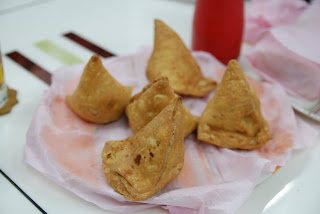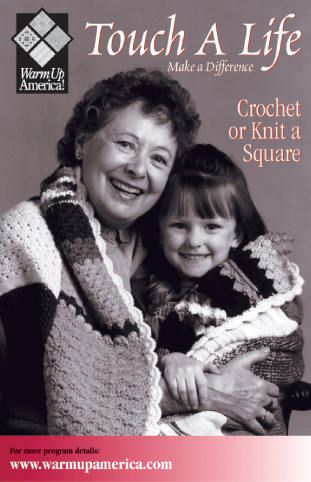Mumbai - Day 3
Today's factory in India makes scarves and cover-ups, not hats.
 Upon walking in you are greeted by the hustle and bustle of many different jobs being done at once. A different feeling than in the prior days factories. (It's got more of the feel of my hats factories, I think due to having more visible man power...and women power --- Look WOMEN!!!)
Upon walking in you are greeted by the hustle and bustle of many different jobs being done at once. A different feeling than in the prior days factories. (It's got more of the feel of my hats factories, I think due to having more visible man power...and women power --- Look WOMEN!!!)They have been expanding their automated knitting/machine knitting capabilities over the past few years. Big machines, their systems and training to run them can run into the hundreds of thousands of dollars, so everything moves slow and deliberately (and controlled.) Controlled growth is key!
Unlike my factories in China, there are no dormitoried housing facilities provided in India. The exception of sorts is during high season when workers are sent for from towns many hours north of Mumbai and must be provided room and board in order to have them sign on to come work. It's provided locally, but not AT the factory as it is in China.
Thanks to Dan, there are photographs. My camera worked intermittently and I really only got one or two shots that are at all usable below. Thanks Dan!!! Any of these shots can be clicked on (Open in another window as I don't have them set to pop-up) for more a detailed view.
Enough background... Shall we take a tour?
Hand Run Knitting Machines
 The bulk of the knitting that I saw being done was on hand run knitting machines. This is a slower time of year for production (it's about top pick up) thus not all machines were being run.
The bulk of the knitting that I saw being done was on hand run knitting machines. This is a slower time of year for production (it's about top pick up) thus not all machines were being run.When at full capacity, having brought additional hands down from Northern India, this room is PACKED.
The workers have likely learned their skill from their father (note all of the people running these hand machines are men.) Those who come from the North are already trained enabling them to just jump in and go. They stand, mainly barefoot on a towel or cardboard or nothing (they set it up per their own comfort), thread the machine for the specified job and voila! (Note, the fellow in the background in the photo at the left... yes, those are his trousers hanging from his knitting machine. I suppose that is cooler in shorts?) They're off!
 Today they're making striped scarves for a large international store group (you may just see one in your local mall soon.) The workers are told the gauge of how many rows per stripe width and what order the stripes must go in. They place the yarns (dyed at the dying factory) in stripe color order and count the rows for each stripe as they go to make sure all scarves are uniform.
Today they're making striped scarves for a large international store group (you may just see one in your local mall soon.) The workers are told the gauge of how many rows per stripe width and what order the stripes must go in. They place the yarns (dyed at the dying factory) in stripe color order and count the rows for each stripe as they go to make sure all scarves are uniform.Linking machines
 The job of working a linking machine is one I find amazing. They sit and thread knit stitches, each individual stitch onto a single pin in a single fine row - at rapid speed no less!! I'd guesstimate 20-26 pins per inch? Maybe more? WOW!
The job of working a linking machine is one I find amazing. They sit and thread knit stitches, each individual stitch onto a single pin in a single fine row - at rapid speed no less!! I'd guesstimate 20-26 pins per inch? Maybe more? WOW!Once threaded the machine zips across providing a finished edge. The extra (perhaps like selvage) on the ends is simply snipped away then. I fear that my eyes would go blind if my job was to work the linking machine day in day out, but these guys are FAST!!! Again, it's all men running these machines.
 Just after the linking is finished, the items are inspected for every knitters favorite thing... DROPPED STITCHES!!!
Just after the linking is finished, the items are inspected for every knitters favorite thing... DROPPED STITCHES!!!These men stare at each piece and carefully pick up the dropped stitches. Do you SEE how tiny these rows are and the size crochet hook they are using?? Again -- BLIND I TELL YOU BLIND!!! (I know a few knitters out there who'd pay good money for these fellas to come fix your dropped stitches!!)
 Pressing/ blocking/ washing/ drying/ finishing...
Pressing/ blocking/ washing/ drying/ finishing...Depending upon the content of the item it may be washed first, then pressed then washed again and pressed/blocked again. Or washed then pressed and blocked... So many options, each done to a precise recipe to make the finest quality product available. Have I said in this entry how amazing this factories capabilities are?

 AMAZING to watch! There were two men (one clearly of higher rank than the other)
AMAZING to watch! There were two men (one clearly of higher rank than the other)  watching every move this machine made. Any slightly "false move" that was made near this machine was corrected immediately as not to allow a single "flub" in the fine and delicate fabric that was being knit up.
watching every move this machine made. Any slightly "false move" that was made near this machine was corrected immediately as not to allow a single "flub" in the fine and delicate fabric that was being knit up.
 Machine Beading:
Machine Beading:The easiest way to get thew beads on the fabric is actually to weave or knit them INTO the fabric... To the left you see a woman sitting in front of a bowl full of beads that she spins and beads slip onto the needle. This thread of beads is put into the machine (above) and the beads are knit into a string that will later be woven or knit into an item. Pretty cool!!!
 They also have a special sequin machine -- but that's something they developed themselves and I want to leave that as their secret (but trust me -- it's SO COOL!!!)
They also have a special sequin machine -- but that's something they developed themselves and I want to leave that as their secret (but trust me -- it's SO COOL!!!)


























0 Comments:
Post a Comment
<< Home